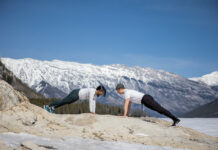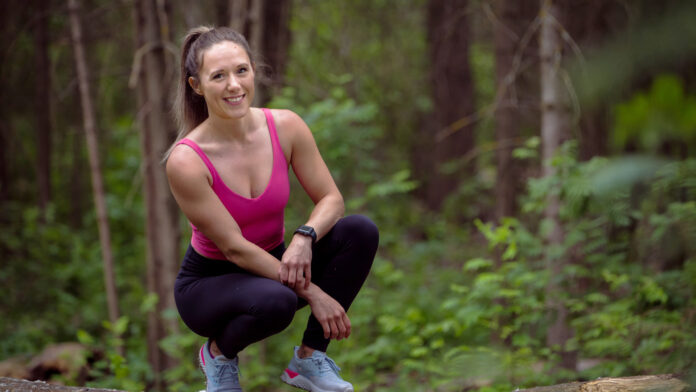
There’s nothing worse than being puffed on those summer hikes. In fact, as you set your sights on your favourite hiking trails in any season, a few simple exercises performed in advance could make your experience much more enjoyable!
Most people don’t think much about preparing their body before they head out for a hike with friends and family. However it’s smart to set a fitness base in the months leading up to your hike. It’s not just training for higher altitudes you have to consider. Hiking requires you to build a foundation of muscular strength and stability for optimal performance. Strengthening off the trails will also protect you against any injuries and not have your legs feeling like Jell-O.
The goal for setting up a strength program for hiking is to increase your strength in the primary muscles involved (quadriceps, glutes, hamstrings, calves and core) along with strengthening your stabilizers, especially your hips, knees and ankles.
With this goal in mind, here are my top five strength exercises to prepare you for any hike.
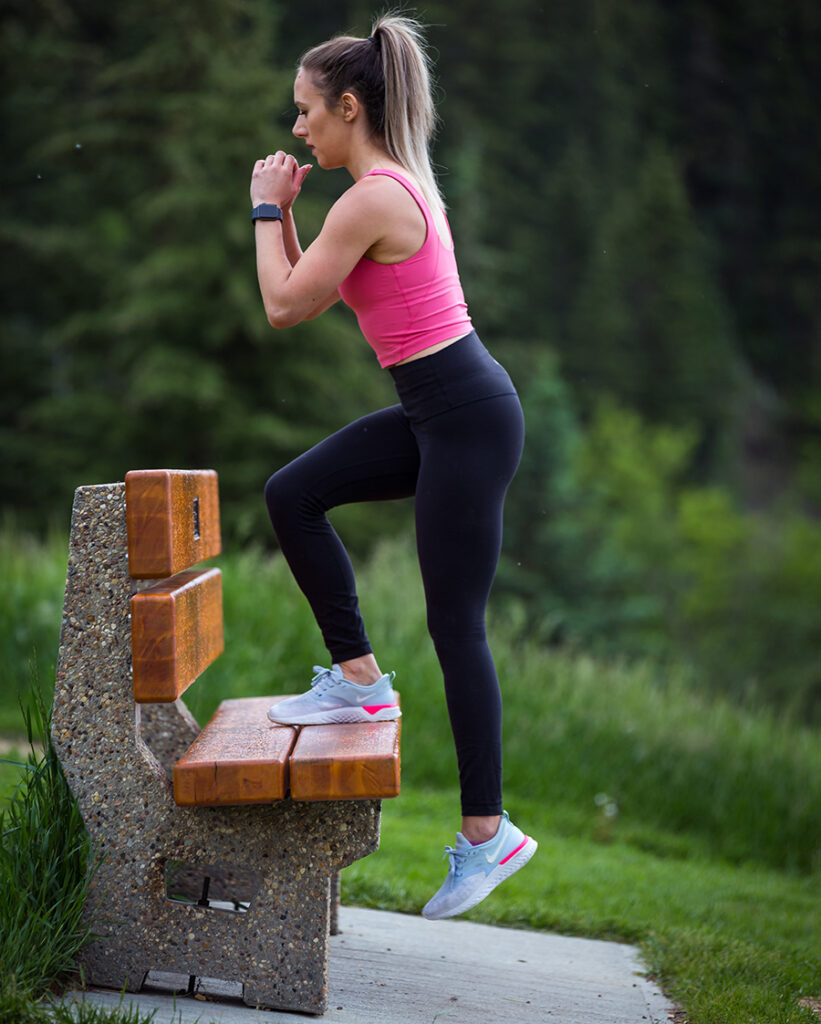
1 POSTERIOR SINGLE-LEG STEP DOWN (COUNT OF THREE DOWN)
The posterior single-leg step down primarily targets your quadriceps and glutes. It also incorporates your core and helps stabilize the knee, making it great for hiking. We want to focus on the eccentric phase of this exercise (lowering of the leg) as it will help us on the downhill portion of our hikes.
3 SETS OF 10-12 REPS/SIDE
Step 1: Start by placing one foot up on a box or bench.
Step 2: Lean forward to load the front foot (on box) and bring the back foot up to touch the box.
Step 3: Slowly lower the back leg for a count of three. Once your back foot hits the ground repeat for desired amount of repetitions before moving to the other side.
Advanced: Hold a dumbbell in each hand to make the exercise more challenging.
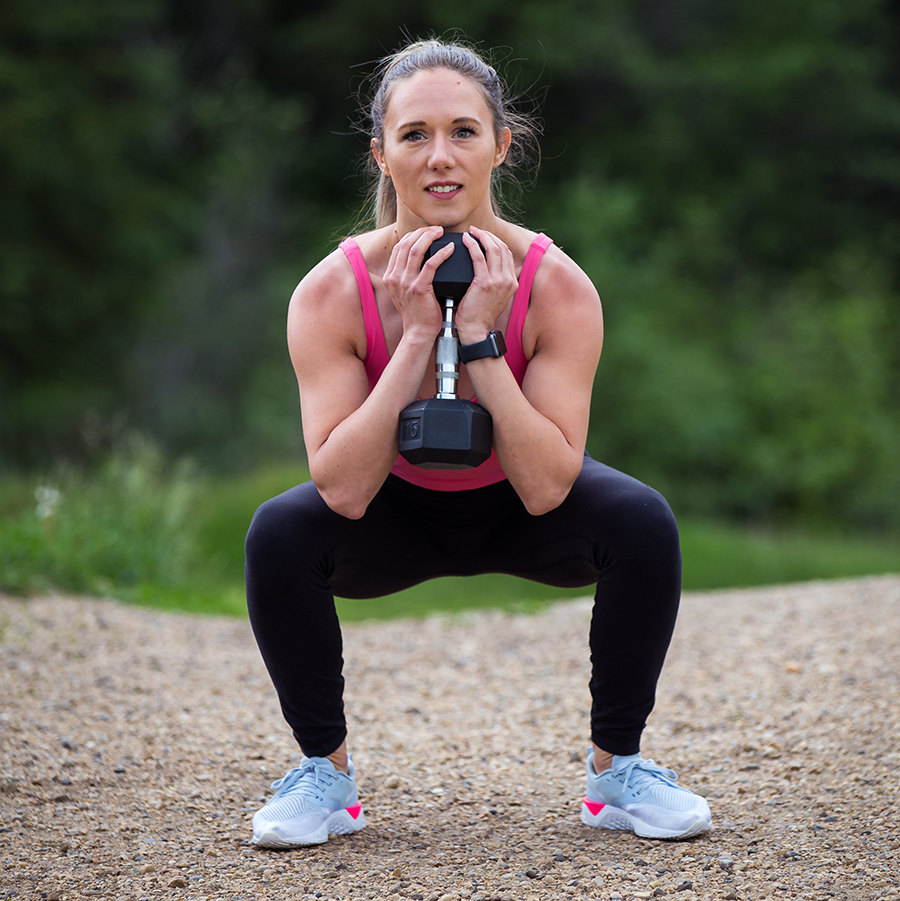
2 GOBLET SQUAT WITH CALF RAISE
The goblet squat with calf raise primarily targets your quadriceps, hamstrings, calves and glutes making it a great exercise for hikers. During this exercise we want to make sure that we’re focusing on the eccentric portion (lowering) to help build our leg muscles.
3 SETS OF 12-15 REPS
Step 1: Start by standing with your feet slightly wider than hip-width distance apart. Hold a dumbbell with both hands (one on either side of the dumbbell) at chest height with elbows bent.
Step 2: Engage your core. Start to press your hips back and bend your knees to come down into your squat position. Slowly lower for a count of three, making sure your knees don’t go over your toes.
Step 3: Press through your heels, quads and glutes to come back to the starting position. At the top range, shift your weight onto your toes and lift your heels to perform a calf raise. Slowly lower your heels down to the ground and repeat.
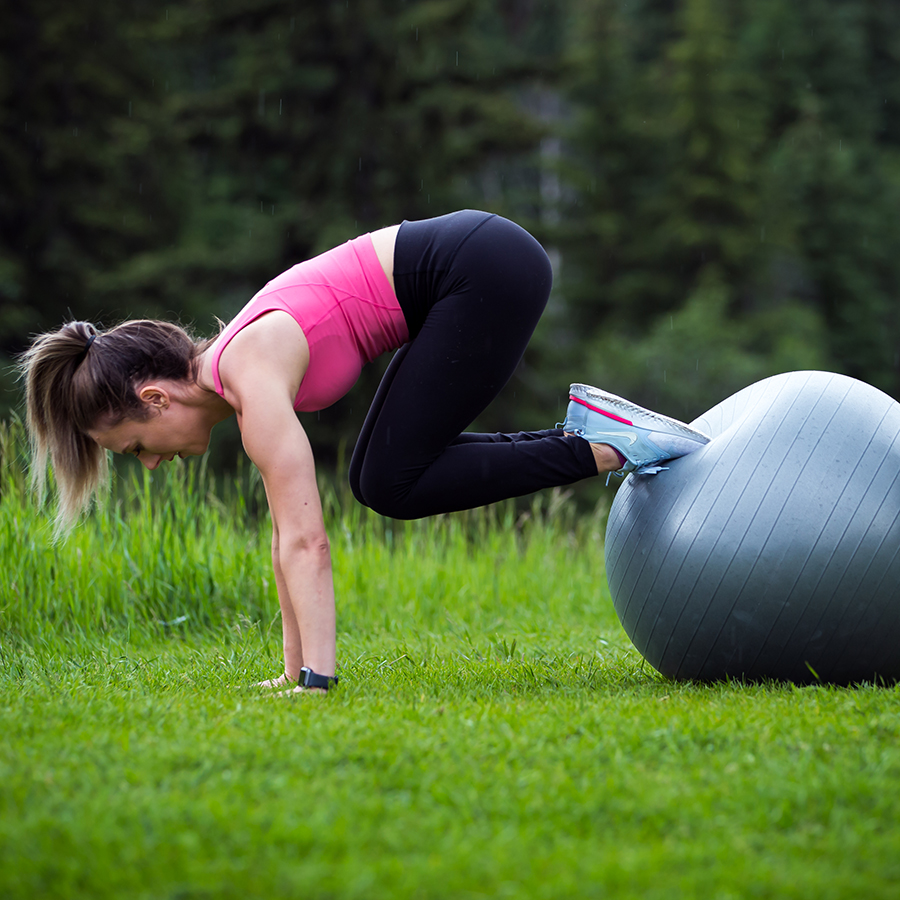
3 SWISS BALL PLANK TUCK
The Swiss ball plank tuck primarily targets the rectus abdominis while incorporating hip flexors, shoulders and balance. Having a strong core while hiking is essential to help you on those uneven surfaces.
3 SETS OF 30-45 SECONDS
Step 1: Start in a plank position with your wrists underneath your shoulders and the top of your feet resting on the Swiss ball.
Step 2: Keeping your core engaged and hips level, start to pull your knees toward your chest, rolling the ball towards you.
Step 3: Slowly straighten your legs back to starting position and repeat.
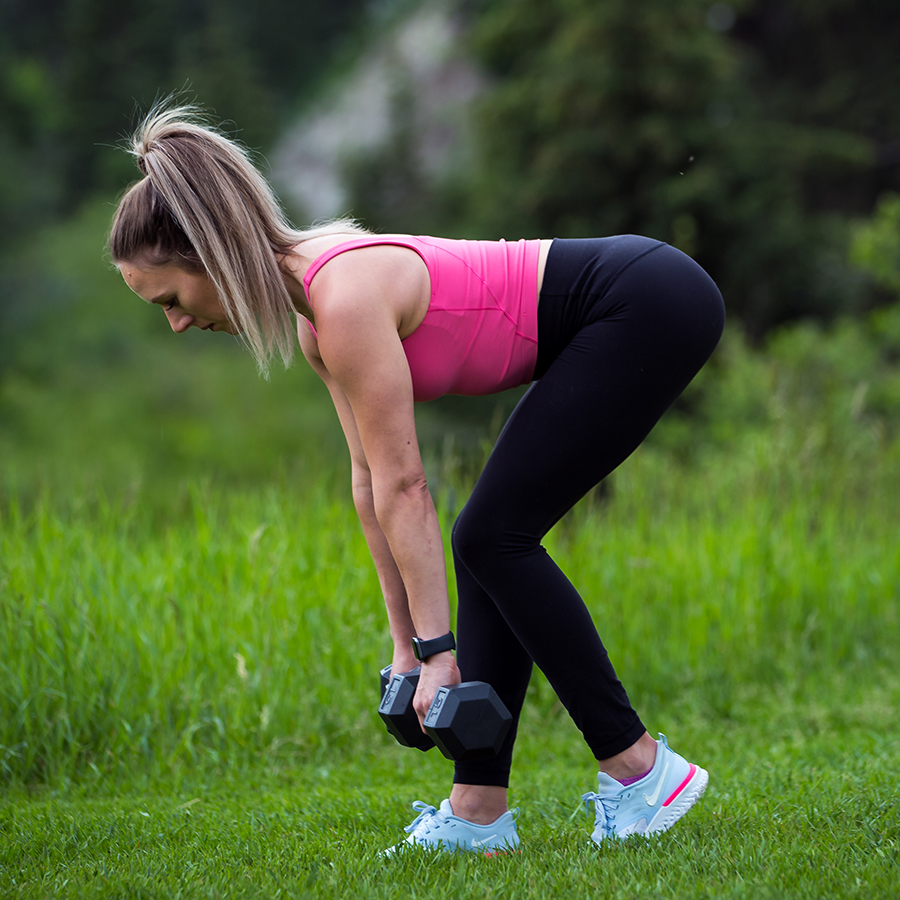
4 B-STANCE DEADLIFT
The deadlift primarily targets hamstrings, glutes, core and lower back. The B-stance is an intermediate variation that can help hikers target the lower body but also incorporate balance similar to unilateral exercises.
3 SETS OF 10-12 REPS/SIDE
Step 1: Start with a dumbbell in each hand with feet hip-width apart. Dumbbells should be in front of you, close to your thighs.
Step 2: Shift all your weight onto your left foot and step your right foot back so that your right toe is in-line with your left heel. Lift your right heel off the ground.
Step 3: Slowly start to hinge at your hips and shift your butt back while allowing your knees to slightly bend and come into a bent-over position with a neutral spine.
Step 4: Engage your core and slowly, push through your left heel and glutes to come back to the starting position.
Step 5: Repeat for desired amount of reps before switching to the other side.
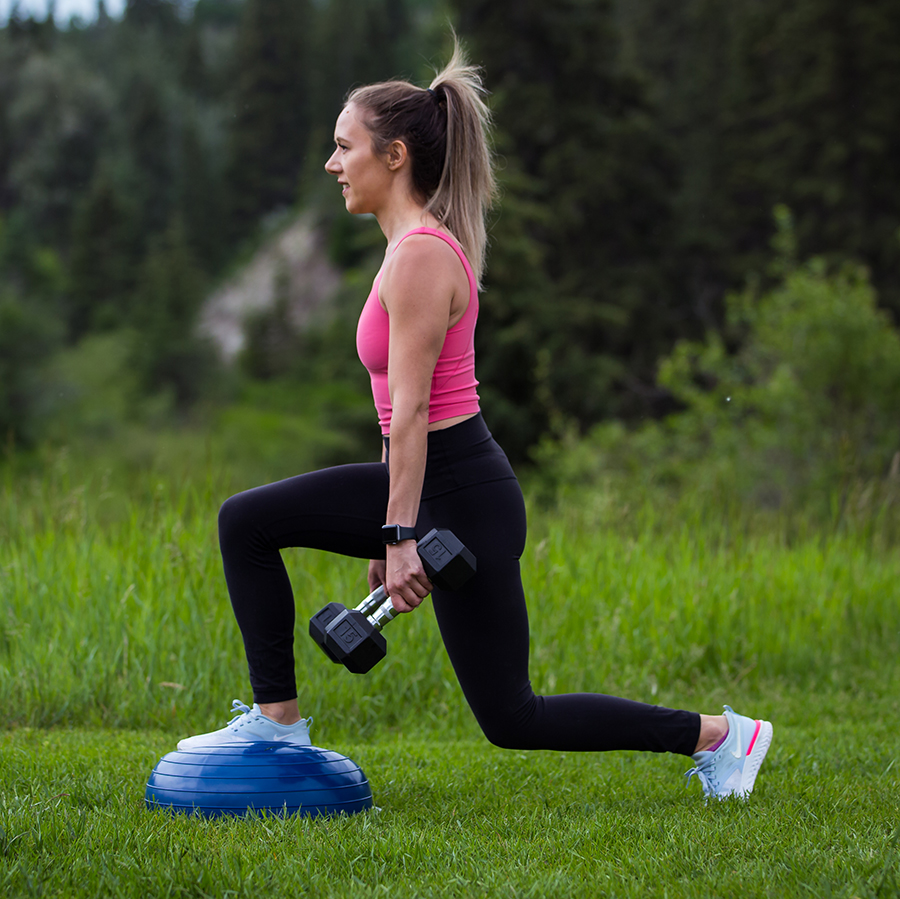
5 BOSU REVERSE LUNGE
The reverse lunge primarily targets quadriceps and glutes. Lunges are a great way for hikers to build lower body strength that will support the knee joint. Adding a BOSU to this exercise allows for more core engagement and helps build up the stabilizing muscles around the hip, knee and ankle.
3 SETS OF 10-12 REPS/SIDE
Step 1: Start with both feet in the center of the BOSU (blue side up). Slowly start to shift your weight onto your right foot, engage your core and step your left foot down onto the ground into a lunge position.
Step 2: Having all your weight still in your right foot, power through the heel and bring your left foot back up to starting position on the BOSU. Step 3: Repeat for desired amount of reps, then switch sides.
Modification: Remove BOSU and use a low step.
Adding these five exercises into your strength program can go a long way towards helping you feel stronger, more confident and feeling less puffed on your upcoming hikes.
You May Also Like
Workouts
Photography by Kristina Steinbring Photography

Read This Story in Our 2022 Outdoor Summer & Travel Digital Edition
Cold Water King, Core-Centric Fitness, Prepare for Hiking Season, Mountain Bike Fundamentals, The Simple Ways Movement Gives Us ‘Hope’, recipes and much more!


